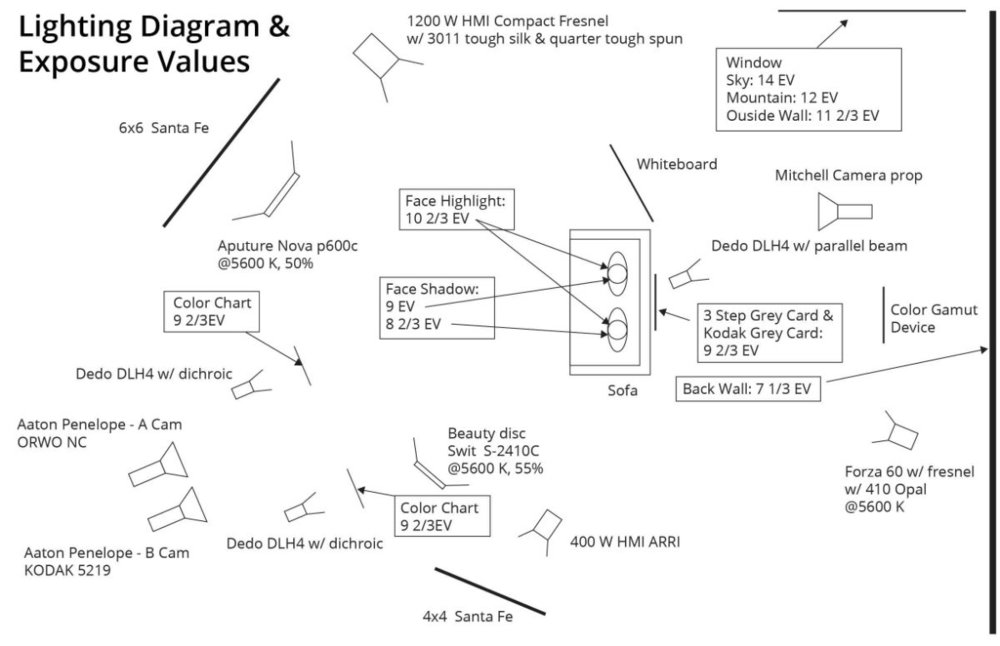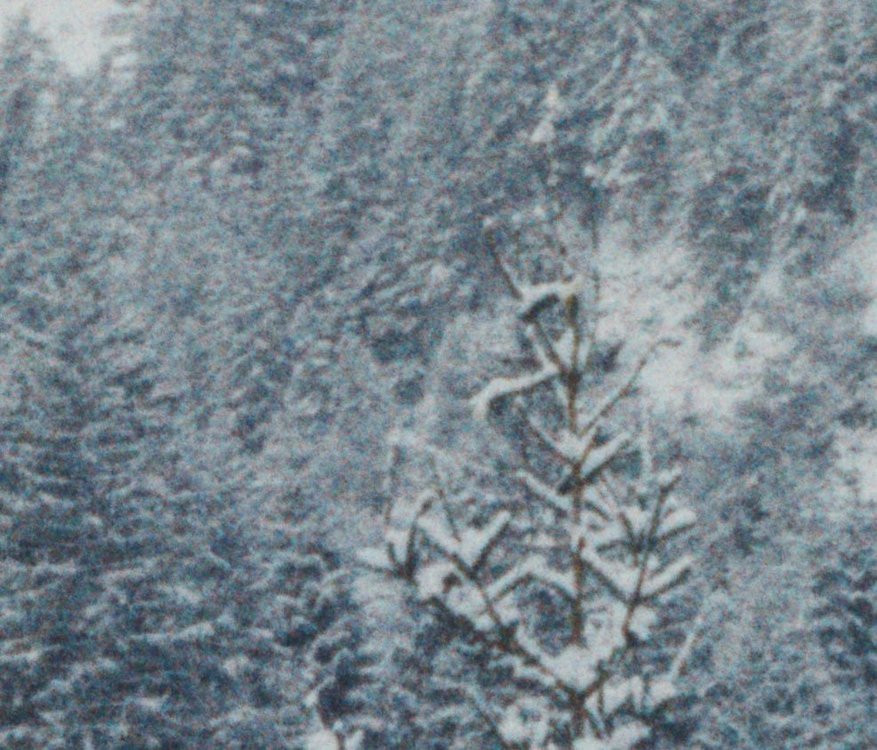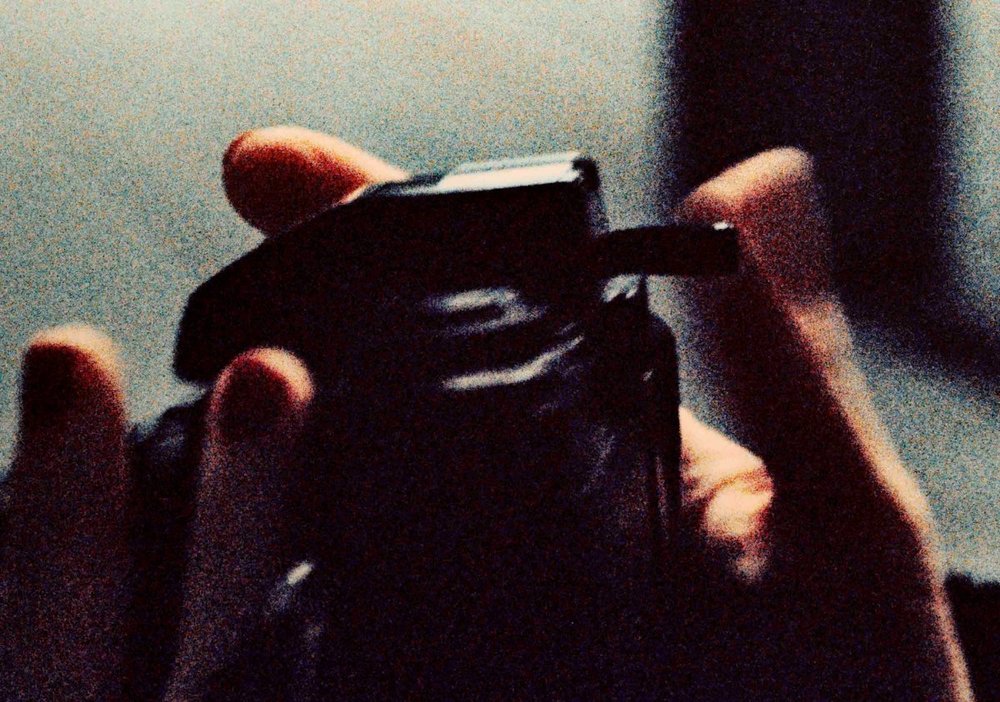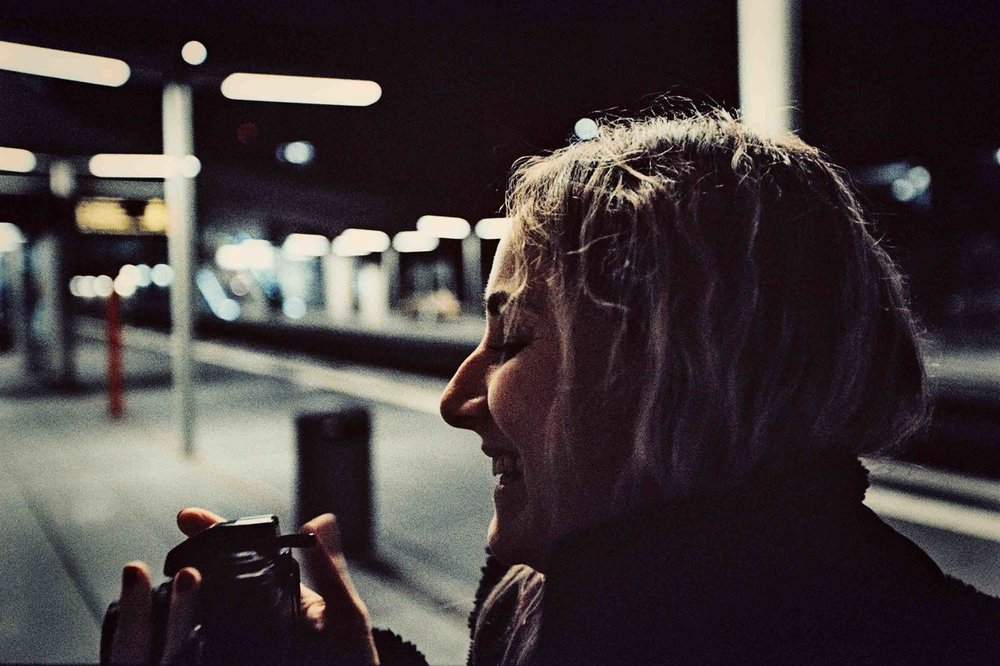
Ludwig Hagelstein
-
Posts
48 -
Joined
-
Last visited
Posts posted by Ludwig Hagelstein
-
-
On 9/11/2023 at 7:09 PM, Robin Phillips said:
if they had not pushed, it would be 1 and 1/3rd under exposed. but doing the push, rating it so low vs the 2000 speed the 2 stop push did means its now over exposed vs the pushed speed. you will not get these results at this IE rating without the 2 stop chemical push
Pushing 2 Stops won't yield an actual effective increase in sensitivity of two stops. At best you get 1/3 of a stop of perceived speed increase per full stop of push processing. So if you take 5219 and push it two stops, arithmetically you'd arrive at EI.2000, but the very maximum effective speed increase in practice would be around 800. So you still have underexposure. Pushing is not a very effective tool to increase film speed. It increases contrast and is much more of an artistic tool than anything else.
-
 1
1
-
-
it's officially back, and in use, too. Gold Lion Winner "Poor Things", by Giorgios Lanthimos and DP Robby Ryan was shot partly on Ektachrome.
-
This is a fantastic resource for info (and samples) about many historic color process, curated by Prof. Flueckinger from Zurich Uni. I highly recommend browsing through the site. It will leave you in awe. Also there were many combinations of tinting and toning together, to create multi color images.
https://filmcolors.org-
 1
1
-
-
On 5/23/2023 at 8:34 PM, David Jean Schweitzer, SOC said:
Please follow this link to view the comprehensive NC400, NC500 as compared to Eastman Kodak 5219 that was shot on March 1st, 2023. https://vimeo.com/820380873
We used two Aaton Penelopes in a side-by-side setup with matching prime lenses. We made two passes, each with the NC stocks in the A camera and Kodak 5219 500T in the B camera. The exposed material was developed and scanned at Colorlab on a DFT Scanty at 4.3K for a 1 to 1 representation on 4K DCI. In addition the material reviewed on ARRI Scanner Company 3 by Thomas Kuo.
The team exposed the stocks at their respective box speed.
The first thing we wanted to find out is the film stocks' speed. The factory rates the two film stocks at ISO 400. We implemented the standard two stops under to 2 stops over wedge test in 1/2 stop increments.
We concluded that the NC400 emulsion looked closer to "normal" at one stop over or N+1, that being ISO 200. At the same time, the NC500 appears to have a slightly less normal density at close to the factory box speed of ISO 400. In conclusion, NC500 appears to have an ISO of 320. I recommend exposing it at ISO 250.
Test Credits:
Dwight D. Campbell - Master Gaffer
Donald Burghardt - Master 1st AC
Dan Venti - Master 1st AC
David Auner, AAC - Cinematographer
Gustavo Perez - Electrician
Hanako Ohashi - Coordinator
David Jean Schweitzer, SOC - Cinematographer, Project LeaderGreat test. How did you perceive perf stability?
-
Silbersalz in Stuttgart. 35MM only right now, but by far best service / price ratio.
-
On 8/31/2021 at 4:52 AM, David Mullen ASC said:
A sensitive camera? Assuming you are willing to live with the look of something shot under a yellowish narrow wavelength lamp. See:
Lots of interesting answers here, but all are unneccessarily complicated.
Actually there is a very easy trick, courtesy of your local lab consultant: Expose a photo on bw paper, process it, fix it, then use a rehalogenizing bleach to reconvert the silver into soluble halides, and you'll have a white piece of paper. Now, in broad daylight, you can process the photo again, and oh boy it's not magic but only smoke, mirrors and some chemistry, the image will reappear, and only the image atop that. You can repeat that cycle as well a few times. So then light your scene as you want and carry on shooting.
cheerio-
 1
1
-
 1
1
-
 1
1
-
-
"For critical applications make tests under your conditions". There is no way around proper testing. I have EXR 100T from god knows when. It needs about 2 stops.
-
8 minutes ago, Robert Houllahan said:
I honestly don't care if Orwo made a deal with ZUUL and had the formulas for the Agfa 320 smuggled out of Valhalla by Tinkerbell.
The only relevant thing is a new color film stock and there are some rolls being shot already so it appears to be real and not vapor.
After that the only question is if they can make it consistently and at a fair price and stay in business.
it's not Agfa XT 320. I would say it's not even close. That was an 80s emulsion. Judging from the grain and how the dye image looks, NC 500 is more in line with how a - here it gets tricky as these are two incompatible systems - lipophilic coupler Version of Agfacolor Neu might have looked given another 20 years of improvement. The 320 XT comparison is not baseless, but I think the film needs its own category in the end.
-
 1
1
-
 1
1
-
-
even after ten minutes I cant stop shaking my head. There i was telling you all "go ahead try the film, have fun - maybe all the doubters were wrong after all- a few days ago. I stand by what I said about the technical achievement of the emulsion team. But the distribution is beyond verbal description.
-
2 hours ago, Tyler Purcell said:
HA! lol Musta been an early bird deal. Whoops.
I think they have some insanely stupid dynamic pricing mechanism based on stock quantity running amok in their webshop. This can't be rational. Or maybe it is because as my dad once said: "Every day three idiots are born. You just have to find them." The starting price of 187 € net / 122m / 400ft was cheap. Paying ridiculously much for a technically sub-par novelty emulsion is madness, however. As much as I respect the technical achievement of rolling out this emulsion, this will massively hurt them. And it's a punch into the faces of the folks actually making the emulsion.
-
It's insane. At the time I wrote the text above, a 400ft Roll NC 500 was available for 187.00 € net excl. shipping on their site. Now its more expensive than Vision3.
-
44 minutes ago, Uli Meyer said:
The prices seem to have doubled overnight.
I just saw. When I wrote my post a 400ft roll was 187.00 € net. Their marketing / sales / distribution really is erratic.
-
Uli, you might want to have a look at my thread in FILM STOCKS AND PROCESSING ?
-
-
2 hours ago, Joerg Polzfusz said:
When the film is unmasked, could you simply soup it in E6 and use it as color reversal?
No - maskless does not mean it has a clear base. It has a dye filter layer instead of a mask. A coupler mask essentially builds density where no image information is and has no density where image information is. Contrary to that, a filter layer simply adds a dye filter to the film that sort of acts as a mask.
-
 1
1
-
-
8 minutes ago, David Sekanina said:
The color of the base of the film is quite different to other color film stocks. Should scanning facilities modify their scanning procedure, and plug-in creators create a special profile for ORWO conversion to positive? Or do the current methods work well?
that's a very good question. Since the film has no orange mask scanners may have a harder time. But a good operator should be able to handle it.
-
-
As of yesterday, both ORWO NC 500 and NC 400 can be bought in motion picture lenghts of 122 M / 305 M and 610 M on the Orwo website. The 35mm film is BH 1866 perforated and does not have a Remjet backing. The price is very competitive.
Here are a few takeaways from my test with the material. This will concern the NC 500 emulsion. The NC 400 emulsion will be discussed in another post at a later date.
The tests were conducted with material cut down from long rolls with BH 1866 perforation, not with 135-36 finished material.
I've been fortunate enough to have been able to (technically) test a few stages of the emulsion over the last months and must say, that they have come a long way. Making a color film from scratch is not an easy task - some would have called it impossible. Yet, Orwo and the engineers and emulsioneers at Innoviscoat managed to come up with a new color emulsion - in record time. I suggest to take a moment to appreciate this.Many here and elsewhere have been very sceptical and sometimes even demeaning. If you have a problem with the brand, or those associated with it, please refrain from commenting - marketing and distribution of the product is not subject of my short review here. I want to talk about the emulsion.
Film Speed:Even though the Film is called NC 500, the sensitometrically determined film speed of the emulsion, processed in a monitored ECN-2 process is close to 320. Under practical conditions, I suggest the film be exposed at E.I. 250.
Granularity:
Compared to 5219 and 5207, Orwo NC500 is noticeably grainier. This, however, isn't necessarily a bug, but more a feature. The film is not a Vision3 emulsion, and does not even come close. But it does not have to, in my opinion. Compared to any available modern emulsion, the NC 500 has a distinct grain structure / dye distribution pattern that resembles early chromogenic emulsions. Some will like the look, others will not. That's a matter of personal taste.
Sharpness:
Sharpness and especially acutance could be improved upon, but again, in this regard as well the film is distinctly not a Vision3 film.
Antihalation:
Since the film has no remjet backing, one might assume halations could be an issue. However, I am pleased to say that the integral anti halation layer present in the emulsion works very well in surpressing both reflection and diffusion halations.
Color Reproduction:
Color Saturation is overall on the lower end of the spectrum. Especially the yellow dye forming layer fails to form sufficient dye density, which results in muted blues, especially apparent in a blue sky. Overall color reproduction is acceptable.
Uniformity
I still need to conduct a final (moving image) test with the material to give a conclusion here. My tests however, suggest that the film should perform as expected.
Conclusion
Someone who only shoots on 5203 / 50D will probably not enjoy NC 500. If you like to try a new look that is distinctly not as clean as Vision3, but more in line of color negative films found in the late 1960s and early 1970s, this might be a good way to explore that route.
Here are a few example shots taken last weekend in the mountains:
https://drive.google.com/file/d/1rmL7xXPM7YynMUSlYk_sYALSPFZ1Yrt1/view?usp=sharing
https://drive.google.com/file/d/1CeWNT5hlof_1zkLFeEBvHEfPDSA06RPY/view?usp=share_link
-
 1
1
-
-
1 hour ago, David Sekanina said:
Just to get an idea of the grain size relative to the negative size, are these full frame 35mm stills or frames from a super 35 motion picture camera , or S16 motion picture camera?
Thank you
Should have clarified. For this first test I used a 35mm stills camera. The resulting neg is 24x36, or in other terms an 8-Perf Vistavision image.
-
 2
2
-
-
7 hours ago, Phillip Mosness said:
It's all in the eye of the beholder. I find the grain level to be rather appealing in the same way I like the see the texture in a pencil drawing.
Do you happen to remember the stop / shutter speed ?
The aperture was defniitely wide open, at 2.8, and I'd say from the blurry finger the time was below 1/30. The next step is to see how it will look in motion ?
-
Joshua, what you're trying to accomplish is both noble and a bit misleading, in my opinion. Production cost varies, sometimes drastically. And one production might get a very different price than another, based on a plethora of factors. You should at least encourage everyone visiting your site to actually reach out to labs and ask for pricing for their specific project and then suggest to compare two or three offerings. That is how you get the best price.
-
-
-








Kodak Vision3 500T 5219 night shoot
in Film Stocks & Processing
Posted
I think pushing is best approached from 2 angles: Pushing adds something to the look. That is undeniable. But that means also that it is best and most effectively used on purpose. Pushed footage looks different, and that in itself is probably the best case for pushing: If you shoot an ad, for example, and the delivery format is mostly geared towards smartphones, pushing might add just a pinch more "life" to the image, as it accentuates granularity in a specific way that helps sell the message on the small display, while it might look too muddy on a large cinema screen. Pushing is a great visual tool if you know what to expect and work towards it. As a means to correct underexposure it is a double edged sword: If a bit more information matters, better push than not, but it will only bring out density where there is already a latent image present. At the time of exposure the film had a set sensitivity. You can't change that afterwards. When no latent image was formed, no dyes will form. It's a bit easier to pull detail out of pushed neg under some circumstances.
No, certainly not. Pushing changes the look. But it shouldnt be seen as just ramping up the speed without anything else happening.
Here's a great summary from EKC regarding the subject:
"Contrast build up from pushed processing is generally most dramatic in the bottom (cyan and magenta) layers of negative film and least dramatic in the top (yellow) layer. This is because development is a diffusion limited process. Contrast mismatch problems are introduced with pushed processing resulting in high red to blue and high green to blue contrast. The relatively high red to blue and high green to blue contrast of the negative produces yellow highlights and blue shadows in the print when mid-scale neutrals are balanced. In many cases the yellow highlights may have a red bias because the mismatch tends to be higher in the cyan layer compared to the magenta layer. It should also be noted that contrast mismatch varies with exposure; stronger effects with over exposure, weaker effects with underexposure. Under exposure, combined with pushed processing, tends to lessen the effects of increased contrast from pushed processing alone. Differences in exposure and scene content may have a significant effect on the perception of color in the resultant print, when pushed processing is used.
ER speed increases with Push processing may be significantly less than needed to offset speed loss from under exposure. With the given conditions above, Push 1 processing produces ER speed increases of less than a 1/3 of a stop and Push 2 produces ER speed increases of around 1/2 of a stop. Push 2 taken in combination with two stops of under exposure represents a stop and a half loss in real speed.
Push processing is not recommended as a means to increase photographic speed. Push processing produces contrast mismatches notably in the red and green sensitive layers ( red most) compared to the blue. This produces reddish- yellow highlights, and cyan- blue shadows. Push processing also produces significant increases in film granularity. Push processing combined with under exposure produces a net loss in photographic speed, higher contrast, smoky shadows, yellow highlights and grainy images, with possible slight losses in sharpness."